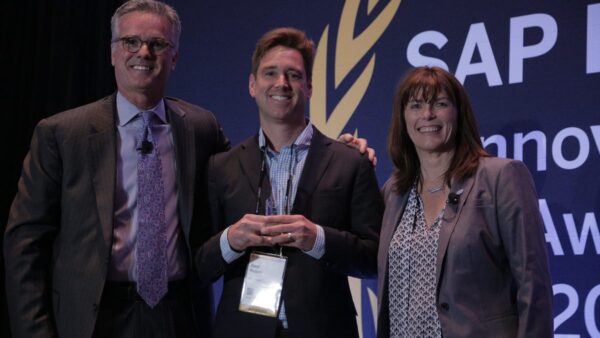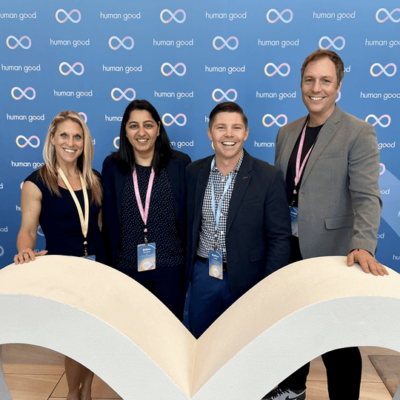As svexa co-founder Daryl Waggott expands his role to become svexa’s Chief Data Officer – Health, we interview him about the genesis of precision medicine and how svexa can democratize it.
Q: What was svexa’s origin story?
A: It’s a cliche, but it was all about being at the right place, at the right time, with the right people. I was working as a computational biologist in Euan Ashley’s lab at Stanford. He created this really interesting team focused on the intersection of genomic medicine, digital health, and data. Individually each of these was certainly impactful, but collectively I would argue they were a real source of innovation. Mikael (now svexa CEO) at the time was leading a fascinating study around the genomics of super elite athletes with extreme physiologies (VO2max). At the same time he was running a high-profile validation study of commercial wearable technology accuracy. In parallel, I was working on all the technical and data aspects. This included Apple’s first batch of ResearchKit apps (MyHeartCounts) and a project with SAP building a next generation medical record. The SAP project combined genomics and wearable data into the EHR to proactively predict risk and recommend interventions. The combination of these projects, and (now svexa CSO) Filip Larsen’s cutting-edge physiology research, at the intersection of genomics and digital health provided some critical insights and a real demand for science-based products, hence the creation of svexa.
Q: What were the insights from the work in Ashley’s lab that helped establish svexa?
A: Three things really: The power of Precision Health as a lens to focus on the individual as a way to optimize human health and fitness, the possibility of Athletes to inform scientific discovery and innovation applied to human health and fitness, and the potential of Physiology combined with data and algorithms to create a disruptive commercial platform that could significantly impact the health and fitness of everyone on the planet, or in space for that matter.
Q: What does Precision Health actually mean?
A: The Precision side of it means an emphasis on individualization and rigorous science. In medicine this is the realization that intervention needs to be tailored to the individual’s unique genomic (nature) and lived experience (nurture) i.e. there is no such thing as one-pill-fits-all. Health entails an emphasis on multiple dimensions for each individual, especially the idea that prevention is just as important to medicine as diagnosis and treatment i.e. the best diagnosis is no diagnosis. As an example, our original project with SAP was about creating the next generation medical record – combining genomics plus digital health telemetry (e.g. wearables) to build a complete picture of the patient. Just imagine that the medical record is a digital twin of you, and so can proactively and in real-time identify risks and recommend preventative measures. That is the vision.
Q: Why do you often work first with elite athletes?
A: First and foremost, the ready availability of data – athletes tend to have lots of it and at fairly high quality, which is crucial for AI algorithm development. They are early adopters of all the best technologies to measure physiology and are compliant to these natural experiments based on training interventions and competition outputs. Building from that, we have a good understanding of how to make the learnings generalizable i.e. studying athletes provides insights that can be applied to the general population and disease states. For example, in the ELITE study we focused on genomic underpinnings of VO2max – this work is now being expanded through the Wu Tsai Human Performance Alliance. The interesting thing about VO2max or aerobic capacity is that it even though it is a specific physiological trait, it still has significant underlying complexity due to influence of multiple systems e.g. mitochondrial efficiency, cardiovascular biomechanics, and blood oxygen carrying capacity.

Q: How do you think about Digital Health and Physiology?
A: We are in the golden age of new digital technologies to measure physiology, from wearables and biosensors to imaging and genomics. The constant change can make downstream innovation challenging. There are unlimited applications using the data from these technologies from human performance and sports to injury prevention and insurance. Similar to technology flux, the unlimited possibilities for business applications can be a challenge. The real key insight for me was that physiology as a process is immutable across technologies and applications. Therefore there is a huge opportunity to future proof the digital health market by building a deep data and science driven company focused on physiology. For example, conducting rigorous validation of wearable accuracy we revealed that Heart Rate and Physical Activity were okay but had significant biases, while Energy Expenditure was just really bad. The issue was not with the technology but the underlying algorithms and their lack of true ‘physiological understanding’.
Q: What is driving your increased focus on svexa’s work?
Over the last five years I have been in Canada working on genomic medicine initiatives. The focus was on governance, standards, and federated learning systems to maximize the value of health data. There is so much high-quality data being generated but the value to public health systems, private companies and ultimately patients is extremely limited. Often this is related to cultural and regulatory reasons just as much as anything technical. Recently, svexa has been seeing a significant inbound interest from a wide range of clients, and has opportunities to bridge this gap between data and application. Everything from national Olympic committees and pro sports teams to wearable technologies and health and wellness programs. Even the metaverse, AR/VR, immersive gaming and space travel. As a result, I am really excited to take on more of an operational position. My role as Chief Data Officer – Health will revolve around development of a data strategy and building bridges into the broader health market, e.g., corporate health, insurance, fitness and wellness programs.
Q: What are you most excited about in the field?
A: Digital Twins – svexa’s deep physiology platform of algorithms and recommendation engines is converging towards a game changing model of human physiology. Something that can be used across a wide range of business uses cases from sports to clinical trials to space travel. Just imagine if your EMR was an adaptive digital twin of your lived experience that proactively predicted risk in real-time without the need for a doctor visit. This is possible. There are many organizations out there using the term ‘digital twin’, but few have the knowledge and integrated capability that allow svexa to really lead in this space. Our vision on physiological digital twins will be published in a scientific journal over the next year.
Stay tuned! Or better yet reach out to me.



